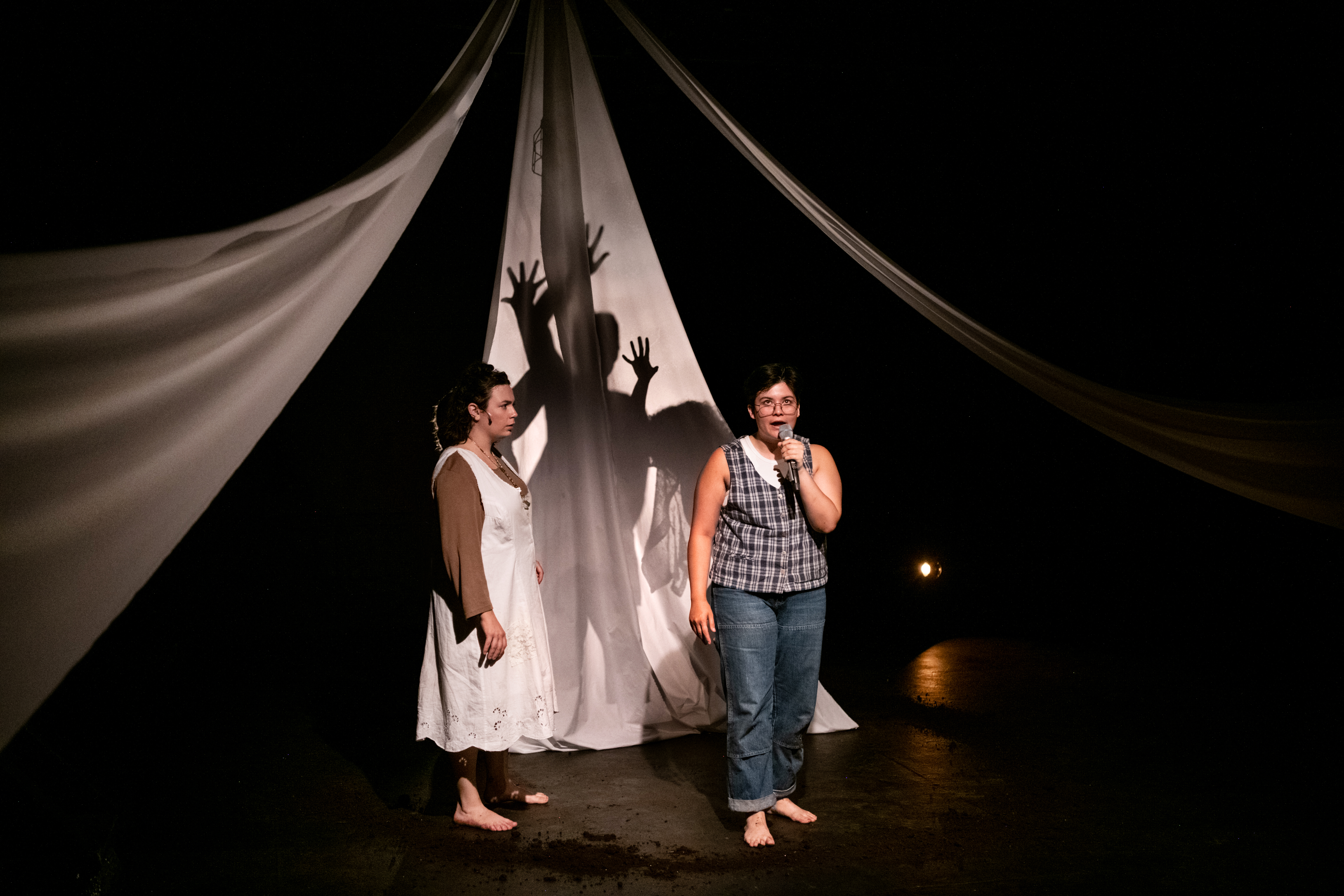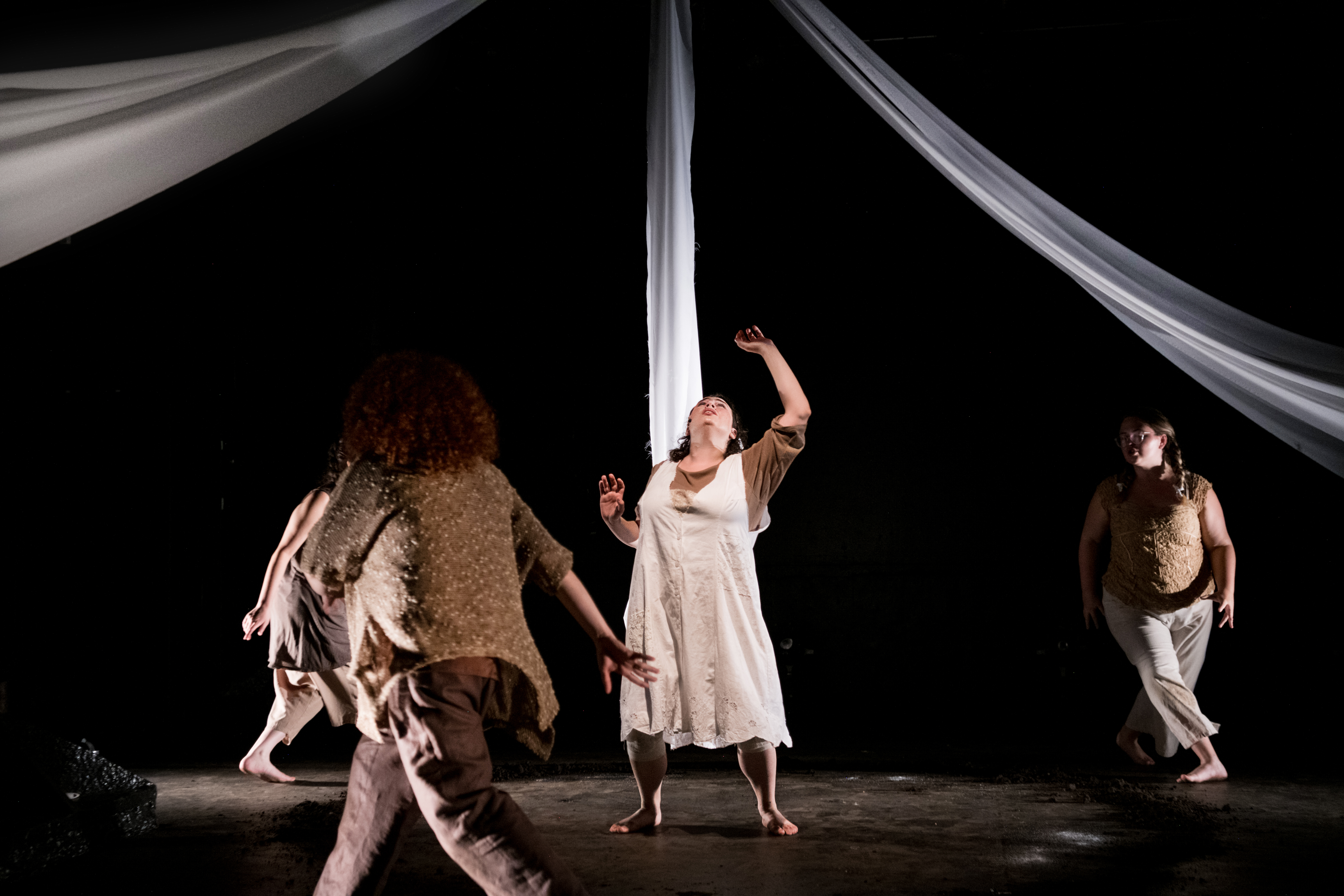Fear and Triumph in New York’s Summer Theater
A REVIEW OF BETH GOLISON’s experimental musical, Here I Fall Up
By DILLON CRANSTON
08.09.2023
---
here i fall up
Written and Composed by Beth Golison
Directed by Annabel Heacock and Maiya Pascouche
Music Directed and Orchestrated by Kyle Brenn
CAST: Samantha Medina Chachra & Sophia Drapeau & Lauren Rose Quigley & Rose Tablizo
---
The stage is sparsely set: a white sheet hanging from the ceiling, and what looks like three sandbags. Ocean sounds play. This is the foundation of here i fall up, a musical incorporating folk and jazz music that premiered as part of the New Ohio Theater’s summer theater lineup.
As the lights dim, three women emerge, emptying the bags in a circle around the sheet. It isn’t sand––it’s dirt. They begin singing, revealing that this is an abandoned house, once inhabited by a young girl so wary of the outside world as to border on agoraphobia. While her sisters petition her to leave the house, she remains firmly planted, finding solace in the company of the house and the ghost that whispers from its walls.
Here i fall up is part ghost story, part love story. At one point, the girl is visited by her neighbor, who searches for a secluded spot to smoke. The musical accompaniment turns rapturous as the two young girls fall in love. The lead confesses her fears and finds acceptance in this budding relationship.
The production shines through its economical set design and the skillful use of its actors. The three sisters serve as both narrators and characters while one splits off occasionally to deliver haunting strains on the cello. The white sheet transforms into three long strips, representing the disintegrating rafters of the abandoned house. When the characters hold the sheets, the gentle waving simulates the movements of the ocean.
Just as the protagonist is compulsively imaginative, crafting stories that entertain and constrain her, the production invites the audience to imagine the ocean, a forest, or simply the abandoned house itself within the sheets.
As the play progresses, the protagonist attempts to communicate with the ghost of the house. Her neighbor, frightened by the house, abandons their relationship. The story then depicts the protagonist’s mental breakdown. She collects items required to break the ghost’s curse and release it from the house while the music crescendos, reaching a fever pitch as she crawls through dirt, desperately completing the ritual.
At the emotional climax of the play, the protagonist stands outside the house, her feet firmly planted. She has made it out of the house, confronting her deepest fears. The story becomes an allegory for anxiety, with the ghost serving as a metaphor for the girl's fears. In the play's final moments, she calls out, "Are you really there?"
The ghost whispers, “No.”
The story embraces ambiguity, never entirely revealing what is really going on. The conclusion, in turn, presents an ambiguously happy ending: the protagonist is alone and has possibly descended into madness—but she made it out. Throughout all her sisters’ petitions to come out and play, her objection was a fear of the dirt. Facing the audience at the very end, she’s covered in it.

Photo: Natalie Powers

